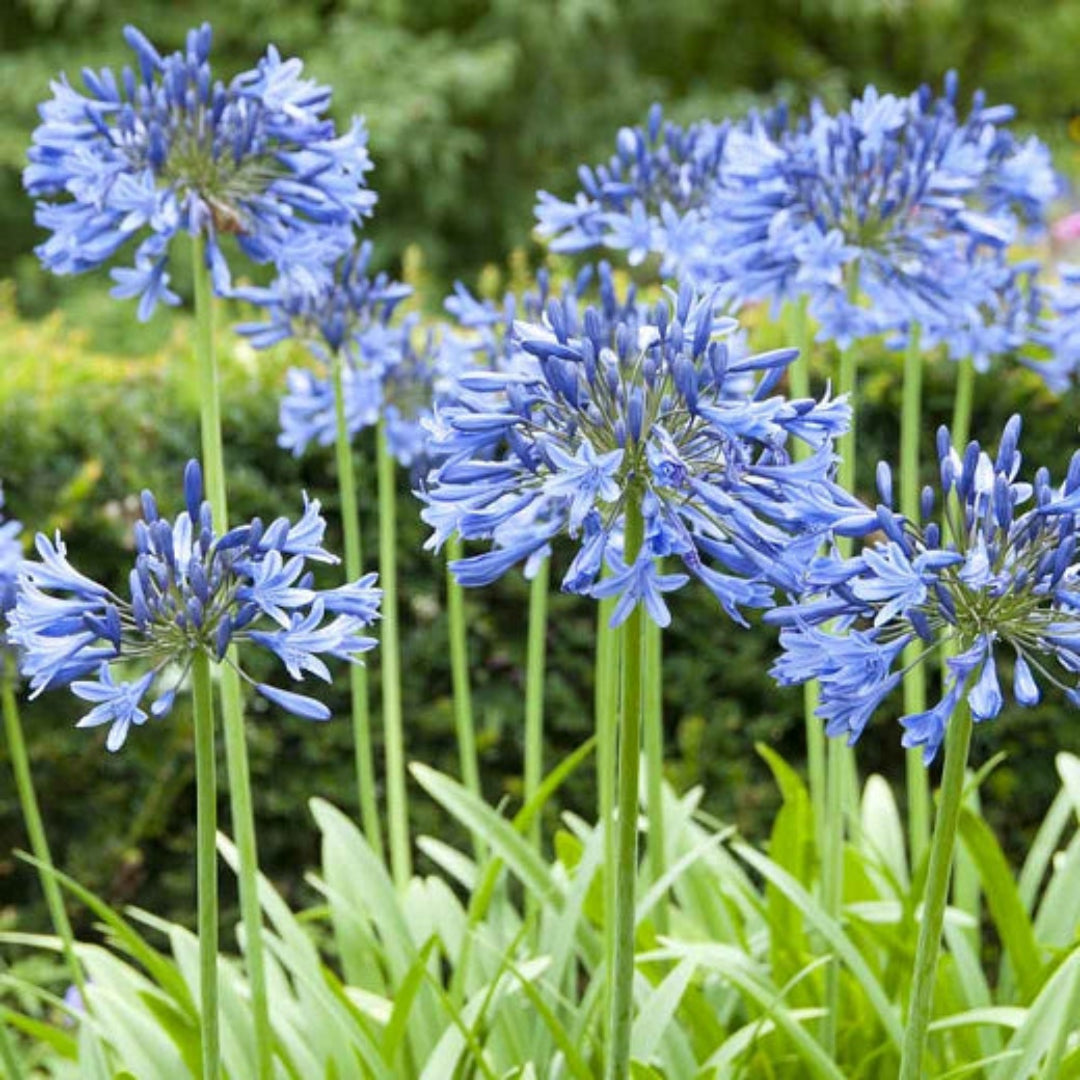Letting Loose the Secret to Effective Agapanthus Cultivation: Idea for a Flourishing Garden
In the world of horticulture, growing agapanthus effectively requires a critical strategy that includes different aspects of plant treatment. With careful attention to detail, one can open the secrets to supporting these stunning blooms, leading to a yard that prospers with beauty and vibrancy. By understanding the nuances of agapanthus growing, one can create an environment where these plants flourish and flower generously. In the adhering to discussion, we will certainly check out necessary suggestions and tricks that will certainly direct you towards a flourishing agapanthus yard, providing understandings into finest techniques, dirt conditions, sprinkling techniques, and more.
Growing Agapanthus: Ideal Practices
When growing Agapanthus, proper soil prep work is important for ensuring effective development and development of these attractive flowers. Agapanthus, commonly understood as Lily of the Nile or African lily, grows in well-draining soil with a somewhat acidic to neutral pH degree - Agapanthus. Prior to planting, it is vital to change heavy clay dirts with natural issue such as garden compost or peat moss to boost drainage and give necessary nutrients for the plants
To grow Agapanthus, choose a place that gets full sunshine to partial shade, as this will advertise healthy and balanced development and plentiful flowering. Dig an opening twice the size of the plant's origin sphere and put the Agapanthus at the very same depth it was previously expanding. Delicately backfill the hole with soil, pressing down firmly to eliminate any kind of air pockets around the origins.
Water the recently grown Agapanthus extensively and remain to keep the soil evenly damp, particularly throughout the plant's energetic expanding season. Agapanthus. Using a well balanced plant food once a month can further support the plant's development and blooming. By following these finest methods for growing Agapanthus, you can create a spectacular display of these exciting blossoms in your yard
Ideal Dirt Conditions for Agapanthus
For ideal growth and blooming success of Agapanthus plants, ensuring the soil conditions are optimal is vital. Agapanthus favors dirt that is abundant in nutrients, so incorporating a well balanced fertilizer throughout the expanding season can advertise healthy growth and vibrant blooms.

Watering and Fertilizing Tips
To make sure healthy growth and dynamic blooms, proper watering and fertilizing methods are crucial for successful Agapanthus farming. Agapanthus plants take advantage of normal watering, specifically throughout the expanding period. It is recommended to water deeply as soon as a week, making sure the soil is moist but not saturated. Throughout heat or in pots, more frequent watering may be required to informative post stop the dirt from drying totally.
When it pertains to feeding Agapanthus, a well balanced plant food with equivalent components nitrogen, phosphorus, and potassium can be applied in the spring to advertise healthy and balanced growth and flowering. Slow-release fertilizers are perfect for providing nutrients progressively over an extensive duration. Stay clear of over-fertilizing, as this can result in too much foliage development at the cost of flowers.
In addition, including raw material like compost into the dirt can boost nutrient degrees and enhance soil framework, aiding in the general health of the Agapanthus plants. By following these watering and feeding ideas, gardeners can guarantee their Agapanthus plants flourish and generate spectacular screens of blossoms.
Trimming and Deadheading Strategies
Appropriate trimming and deadheading strategies play a critical duty in preserving the wellness and appearances of Agapanthus plants, enhancing the necessary practices of watering and fertilizing for successful growing. Pruning Agapanthus involves removing invested blossom heads, yellowing or dead leaves, and total shaping of the plant to advertise far better growth. Deadheading, the procedure of eliminating discolored flowers, not only improves the plant's look however additionally encourages additional flowering.
When deadheading Agapanthus, it is advisable to clip off the flower stem at the base making use of sharp, clean shears. This process reroutes the plant's energy from seed manufacturing back into root and foliage growth, promoting a much healthier and a lot more durable plant. Routine deadheading can extend the blooming period of Agapanthus and stop self-seeding, which can bring about congestion.
In terms of pruning, Agapanthus normally advantages from a light trim after flowering to clean the plant and motivate fresh development. Reducing the spent flower stems and eliminating any type of damaged or dead vegetation assists maintain the plant's vitality and total look. Nevertheless, it is important to stay clear of cutting into the crown of the plant, as this can deteriorate its health and wellness.

Protecting Agapanthus From Pests and Diseases
Executing effective insect and illness monitoring techniques is important to safeguarding the wellness and vigor of Agapanthus plants in growing. One common webpage pest that affects Agapanthus is the Agapanthus borer, a caterpillar that passages into the plant, creating damages to the fallen leaves and blossoms.
In enhancement to pests, Agapanthus are vulnerable to conditions such as root rot and fungal leaf spots. By staying cautious and attending to insect and condition problems without delay, gardeners can help their Agapanthus prosper and prosper.

Final Thought
In conclusion, successful cultivation of agapanthus calls for proper growing methods, ideal dirt conditions, sufficient watering and feeding, regular pruning and deadheading, and defense from bugs and conditions. By adhering to these tricks and ideas, gardeners can guarantee a flourishing garden full of stunning agapanthus flowers. Agapanthus. Keep in mind to maintain regular treatment and attention to detail to advertise the wellness and longevity of these stunning plants
When planting Agapanthus, appropriate dirt prep work is essential for making sure effective development and development of these stunning blossoms.Water the freshly planted Agapanthus thoroughly and continue to keep the soil uniformly damp, particularly during the plant's energetic growing period.For optimum development and growing success of Agapanthus plants, ensuring the image source soil conditions are perfect is critical. When transplanting or planting Agapanthus, guarantee the dirt is well-prepared to offer the essential foundation for the plants to establish themselves efficiently. One typical bug that influences Agapanthus is the Agapanthus borer, a caterpillar that tunnels right into the plant, creating damage to the flowers and fallen leaves.